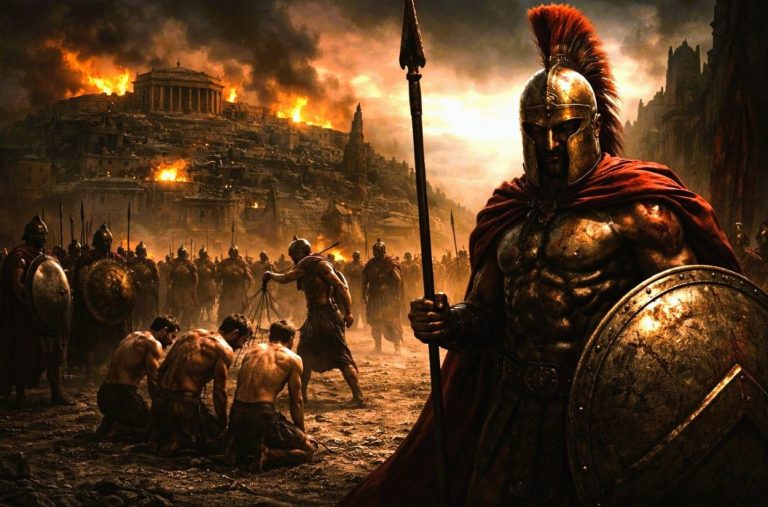
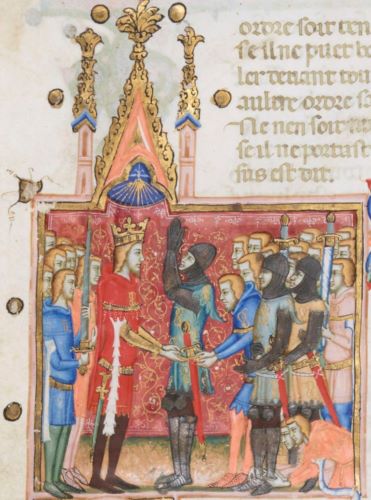
It was an elaborate and deeply embedded system that shaped the lives of millions for centuries.

By Matthew A. McIntosh
Public Historian
Brewminate
Introduction
The social class structure of Medieval Europe was a deeply entrenched and rigid hierarchy that defined the roles, privileges, and responsibilities of individuals from birth to death. Emerging from the collapse of the Western Roman Empire and shaped by feudalism, religion, warfare, and agriculture, this structure influenced nearly every aspect of life for over a millennium. Far from being static, however, the system was subject to evolution, local variation, and eventual transformation by the late Middle Ages. This essay will examine the origins, components, and implications of the medieval class system, focusing on its three primary estates: those who prayed (clergy), those who fought (nobility), and those who worked (peasants), while also addressing subgroups such as serfs, merchants, and emerging townspeople.
Origins of the Medieval Social Hierarchy
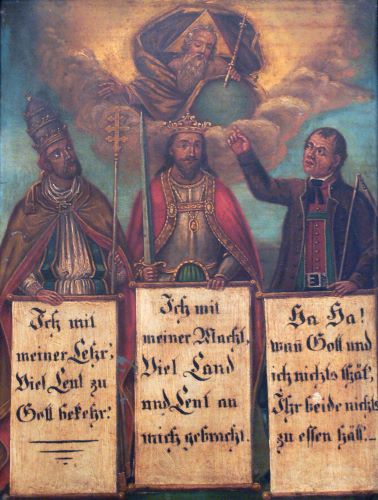
The medieval class system developed from a blend of Roman, Germanic, and Christian traditions. With the fall of Rome in the 5th century CE, centralized political authority weakened, leading to the rise of localized rule and land-based power. Germanic tribal customs emphasized warrior elites and loyalty to lords, laying the groundwork for feudal relationships. Meanwhile, Christianity, especially the doctrine of the “three orders” or “three estates,” provided a moral and theological justification for a stratified society.1
The doctrine of the three estates divided society into:
- Oratores – Those who prayed (clergy)
- Bellatores – Those who fought (nobles and knights)
- Laboratores – Those who worked (peasants, artisans, and later townspeople)
This tripartite division was not merely descriptive but prescriptive, aiming to maintain harmony in a society seen as divinely ordered.2
The Clergy: Those Who Prayed
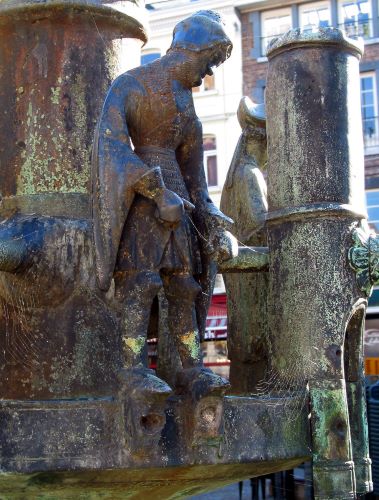
The clergy occupied the highest moral rank in the medieval hierarchy. They were the spiritual shepherds of Christian Europe, responsible for the care of souls, the administration of sacraments, and the dissemination of doctrine. The clergy was itself divided into two categories:
- Secular clergy: Parish priests, bishops, and archbishops who interacted directly with laypeople.
- Regular clergy: Monks and nuns who lived according to specific religious rules (e.g., Benedictines, Franciscans, Cistercians).
Clergy wielded immense power not only spiritually but also politically and economically. The Church was the largest landowner in Europe and maintained its own courts and laws (canon law).3 High-ranking clergy often came from noble families and held dual authority as both religious and secular leaders. The Pope, as head of the Roman Catholic Church, was arguably the most influential figure in Europe during the High Middle Ages.4
Despite their exalted status, lower clergy, such as village priests, were often poorly educated and lived in conditions similar to those of the peasants they served. This disparity within the estate would become more pronounced and controversial during the later Middle Ages and Renaissance.5
The Nobility: Those Who Fought
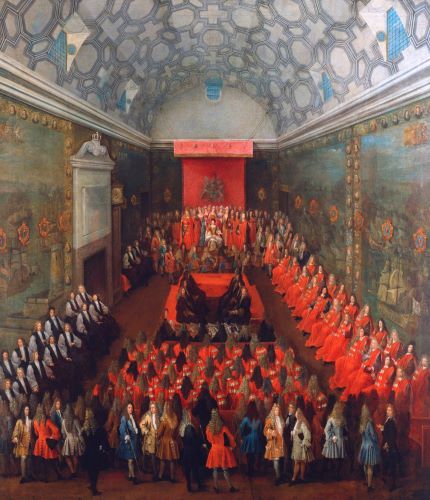
The nobility formed the warrior class, tasked with the defense of Christendom and the maintenance of order. Their status was rooted in land ownership, lineage, and military service. Under the feudal system, nobles granted land (fiefs) by a monarch or higher lord owed loyalty and service in return, particularly in the form of military aid.6
Noble society was hierarchical:
- Kings and queens: Sovereign rulers at the top of the feudal pyramid.
- High nobility: Dukes, counts, and barons who held vast estates and commanded armies.
- Lesser nobility or knights: Often vassals to greater lords, knights provided military service in exchange for land or income.
Knighthood was both a military and social institution. By the 12th century, it was heavily ritualized, with chivalric codes emphasizing honor, loyalty, and the protection of the weak.7
Nobles held judicial rights over their lands, collected rents, and maintained private armies. Their estates functioned as semi-independent entities, leading to frequent conflict and shifting allegiances. Over time, especially in the High and Late Middle Ages, many nobles grew increasingly involved in courtly and administrative roles, blurring the line between warrior and bureaucrat.8
The Peasantry: Those Who Worked
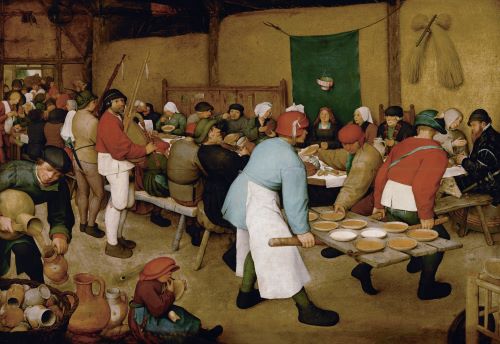
The largest and most diverse group was the peasantry, who made up roughly 80–90% of the population. They were responsible for producing the food and goods that sustained all other classes. While some peasants owned or rented land, most lived under varying degrees of servitude and dependency.9
The two major categories were:
- Free peasants: Had legal rights and some land ownership.
- Serfs: Legally bound to the land and subject to the authority of a lord.
Life for peasants was harsh and precarious. They worked long hours, had poor diets, and were vulnerable to famine, disease, and war.10 However, they were not without agency. Customary rights, communal decision-making, and periodic resistance (e.g., peasant revolts) attest to a complex social dynamic.11
Women in the peasantry had limited legal status but played essential roles in both household and field labor. Their experience was shaped by both gender and class, placing them at the bottom of the social hierarchy.12
Townspeople and the Rise of the Bourgeoisie
Beginning in the 11th and 12th centuries, urban life began to reemerge, particularly in Italy, the Low Countries, and along trade routes. Towns attracted artisans, merchants, and tradespeople, many of whom fell outside the traditional tripartite model.13
The growth of commerce and industry gave rise to a new class: the bourgeoisie. These individuals, while technically “laboratores,” often amassed significant wealth and political influence. Guilds regulated trade, ensured quality control, and provided social support for their members.14
Some towns gained charters of liberties, allowing them to self-govern and operate largely outside feudal structures. This shift weakened the traditional nobility and contributed to the gradual decline of feudalism.15
Jews, Outcasts, and Marginal Groups
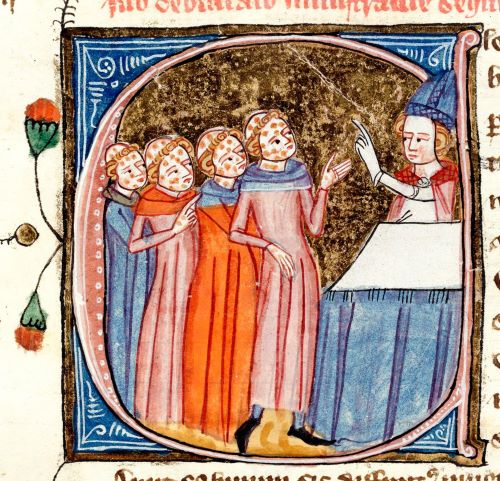
Not everyone in medieval society fit neatly into the estates. Jews, for instance, occupied a unique and often precarious position. Forbidden from owning land and barred from most guilds, many engaged in moneylending or trade—professions both vital and vilified.¹⁶ Periods of relative tolerance alternated with violent persecution, such as the pogroms during the Black Death or expulsion from England (1290) and France (1306).17
Other marginalized groups included:
- Lepers and beggars, often treated as moral pariahs.
- Heretics, who challenged the Church’s authority and were brutally suppressed.
- Outlaws and vagabonds, considered threats to social order.
These groups existed outside the formal class structure but reveal the boundaries and anxieties of medieval society.18
Mobility and Change Over Time
While medieval society was rigidly hierarchical, it was not completely static. Factors that contributed to social mobility included:
- Clerical advancement: Talented men from modest backgrounds could rise through the Church hierarchy.
- Military service: Distinguished knights could be ennobled.
- Commerce: Wealthy merchants sometimes purchased titles.
- Plague and war: Catastrophes like the Black Death disrupted labor systems and empowered surviving workers.19
By the Late Middle Ages, the old tripartite model was increasingly outdated. The Renaissance, Reformation, and rise of nation-states would eventually give rise to modern notions of class based on wealth and occupation rather than birth and divine order.20
Conclusion
The social class structure of medieval Europe was an elaborate and deeply embedded system that shaped the lives of millions for centuries. Based on land, labor, and loyalty, it reinforced a worldview in which everyone had a divinely ordained place. Yet within this structure existed tensions, contradictions, and the seeds of transformation. Understanding medieval social hierarchy not only illuminates the period’s politics, religion, and economy but also provides insight into the enduring legacies of inequality and privilege in European history.
Appendix
Endnotes
- Georges Duby, The Three Orders: Feudal Society Imagined (Chicago: University of Chicago Press, 1980), 3–6.
- Duby, Three Orders, 12.
- Barbara H. Rosenwein, A Short History of the Middle Ages, 5th ed. (Toronto: University of Toronto Press, 2018), 103.
- R.W. Southern, Western Society and the Church in the Middle Ages (London: Penguin Books, 1970), 44–47.
- Rosenwein, Short History, 115.
- Marc Bloch, Feudal Society, trans. L.A. Manyon (Chicago: University of Chicago Press, 1961), 127.
- David Crouch, The Birth of Nobility: Constructing Aristocracy in England and France, 900–1300 (London: Routledge, 2005), 55–60.
- Crouch, Birth of Nobility, 78.
- Bloch, Feudal Society, 213.
- Judith Bennett, Medieval Europe: A Short History, 11th ed. (New York: Oxford University Press, 2010), 92.
- Bennett, Medieval Europe, 94.
- Shulamith Shahar, The Fourth Estate: A History of Women in the Middle Ages (London: Methuen, 1983), 56.
- Rosenwein, Short History, 149.
- Henri Pirenne, Medieval Cities: Their Origins and the Revival of Trade, trans. Frank H. Newton (Princeton: Princeton University Press, 1925), 68.
- Pirenne, Medieval Cities, 82.
- Gavin I. Langmuir, History, Religion, and Antisemitism (Berkeley: University of California Press, 1990), 202.
- Robert Chazan, European Jewry and the First Crusade (Berkeley: University of California Press, 1987), 167–68.
- Rosenwein, Short History, 200.
- William Chester Jordan, The Great Famine: Northern Europe in the Early Fourteenth Century (Princeton: Princeton University Press, 1996), 183.
- Jacques Le Goff, Medieval Civilization: 400–1500, trans. Julia Barrow (Oxford: Blackwell, 1990), 301.
Bibliography
- Bennett, Judith. Medieval Europe: A Short History. 11th ed. New York: Oxford University Press, 2010.
- Bloch, Marc. Feudal Society. Translated by L.A. Manyon. Chicago: University of Chicago Press, 1961.
- Chazan, Robert. European Jewry and the First Crusade. Berkeley: University of California Press, 1987.
- Crouch, David. The Birth of Nobility: Constructing Aristocracy in England and France, 900–1300. London: Routledge, 2005.
- Duby, Georges. The Three Orders: Feudal Society Imagined. Chicago: University of Chicago Press, 1980.
- Jordan, William Chester. The Great Famine: Northern Europe in the Early Fourteenth Century. Princeton: Princeton University Press, 1996.
- Langmuir, Gavin I. History, Religion, and Antisemitism. Berkeley: University of California Press, 1990.
- Le Goff, Jacques. Medieval Civilization: 400–1500. Translated by Julia Barrow. Oxford: Blackwell, 1990.
- Pirenne, Henri. Medieval Cities: Their Origins and the Revival of Trade. Translated by Frank H. Newton. Princeton: Princeton University Press, 1925.
- Rosenwein, Barbara H. A Short History of the Middle Ages. 5th ed. Toronto: University of Toronto Press, 2018.
- Shahar, Shulamith. The Fourth Estate: A History of Women in the Middle Ages. London: Methuen, 1983.
- Southern, R.W. Western Society and the Church in the Middle Ages. London: Penguin Books, 1970.
Originally published by Brewminate, 06.11.2025, under the terms of a Creative Commons Attribution-NonCommercial-NoDerivatives 4.0 International license.


